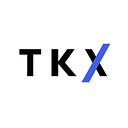Pioneering DeFi Lending 2.0 with Omnichain Functionality: Radiant Capital | TKX Weekly
by @Guaaronnnn
editor @FriedWagyuu
If Aave and Compound symbolize DeFi lending 1.0, then Radiant Capital undoubtedly represents DeFi lending 2.0. Its position in the top 5 lending protocols, based on total value locked (TVL), is notable. Yet, what truly sets Radiant Capital apart is its omnichain functionality, offering an innovative and unique approach to the DeFi lending space.
DeFi capital is scattered across many chains, leading to fragmented money markets and liquidity. This means lenders and borrowers are restricted to specific chains and complex transactions when moving assets between chains, creating an inefficient and cumbersome user experience.
Intro
Radiant is an omnichain money market platform in the decentralized finance (DeFi) space that allows users to deposit and borrow assets across multiple blockchains. It uses the $RDNT token as its native utility token. Its cross-chain interoperability and earning potential through $RDNT make it a unique offering in the DeFi ecosystem.
Since Radiant v2 started, its TVL has grown 10x to about $250 million. This is thanks to changes in how emissions are given out, making it better for long-term growth. It also improved the incentives for people to provide liquidity, changed the penalties for early exits, and reduced the chances of quick-profit seekers taking advantage. These changes aim to keep more money in the system.
How it works
Borrowing and Lending
Radiant works like Compound and AAVE, people can deposit their tokens into Radiant’s pool on Arbitrum and Binance Smart Chain. After that, they can borrow other tokens on other chains, but they can’t borrow more than they put in. For instance, if you put in $1000 worth of ETH, you can borrow up to $900 of stablecoins, not more.
In the past, moving tokens between different blockchains was hard. It was like taking two different buses to go to one place. Radiant Finance makes it easy with just one click.
Dynamic Liquidity Provision (dLP)
dLP is the key in the V2 tokenomics. What Radiant is trying to solve is
- “governance-only” tokens with zero value accrual
- LPs always “farm and dump” the tokens
Radiant has restructured its tokenomics to augment the utility of RDNT by:
- Initiating RDNT emissions on deposits and borrows through the locking of dLP tokens
- Facilitating a share in platform fees
Users can only by providing a certain proportion of liquidity to receive additional RDNT emission incentives. Radiant uses these extra RDNT emissions to incentivize both lenders and borrowers. To qualify for these incentives, users must supply a certain amount of liquidity (dLP), which must equal to at least 5% of the total value of their deposits. This is known as dynamic liquidity provision (dLP) due to the fluctuating nature of value. dLP is the LP token of RDNT/ETH pool.
If the value of the provided liquidity falls below 5% of the total deposit value, users will not receive the extra RDNT rewards. Therefore, depositors who want to earn RDNT must provide a specific proportion of liquidity. By locking a certain proportion of RDNT, demand for the token increases; simultaneously, it also enhances RDNT’s liquidity. This aligns the long-term development interests of contributors and the protocol.
Data
There has been a substantial increase in Total Value Locked (TVL), growing 10x since 2023.
After the introduction of V2, Radiant successfully boosted both lending and borrowing activity.
It also generated significantly more fees compared to the previous year.
Thoughts
- With the new tokenomics RDNT token’s price decline can only be slowed down, not stopped. Without the addition of new strategies, if the timeline is long enough, it might also ends up like other DeFi protocol. The high APR yields from loans cannot be sustained and will eventually return to normal. At that point, RDNT’s token price will fall. But for now, Radiant is a new protocol and supports cross-chain operations, with a value capture ability much stronger than Compound and Aave.
- Radiant’s new tokenomics — requiring a lockup on LP tokens according to the size of the LP — could indeed serve as a good template for other DeFi projects. It has the potential to address the issue of token utility, which often faces criticism.
- Projects such as Radpie, which is akin to Curve-Convex, have begun to grow around Radiant. This suggests that the yield on Radiant is indeed appealing. Similar scenarios have previously taken place with Pendle. If these patterns repeat themselves, Radiant is poised to reap substantial benefits.
Reference
https://dune.com/shogun/radiant-capital
https://defillama.com/protocol/radiant
https://twitter.com/NintendoDoomed/status/1672489237923651586
https://docs.radiant.capital/radiant/
https://medium.com/@RadiantCapital/cryptos-most-profitable-protocol-a-new-era-for-defi-b374ca82a741
https://medium.com/@RadiantCapital/defis-most-profitable-protocol-part-two-7ab13b11c2c2
About TKX CAPITAL
Website: TKX.CAPITAL
Twitter: @TKXCAPITAL
Build with us: HI@TKX.CAPITAL
Note: TKX CAPITAL do not offer any financial advice for retail investors.
